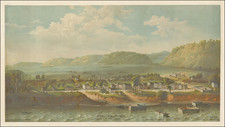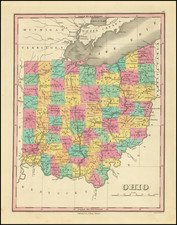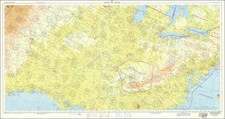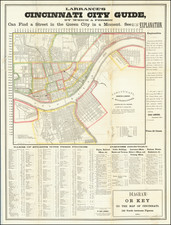Mapping Ancient Indigenous Fortifications on the Little Miami River
This detailed map delineates the ancient fortifications located on the eastern bank of the Little Miami River in Ohio. It is a fascinating historical document, providing a meticulous representation of prehistoric earthworks that once stood in the region.
The map was prepared by the French Geographical Society.
The fortifications represented in this map are indicative of the complex societal structures and engineering skills of the Indigenous peoples of the Ohio Valley. These structures, often referred to as "mounds" or "earthworks," were constructed thousands of years ago, primarily during the Hopewell culture period (approximately 200 BC to AD 500). While the exact purposes of these earthworks are still debated among archaeologists, they are believed to have served a variety of functions, including ceremonial, religious, and defensive roles.
The map shows a detailed layout of the earthworks, including mounds, embankments, and ditches. The layout often features geometric precision, suggesting a high level of planning and organization among the builders. The presence of a “Grande Route” (Great Road) and “Route” (Road) suggests that these structures were part of a larger network, possibly for trade, ceremonial use, or other forms of social interaction.
The historical context of this map extends beyond the architectural marvels it represents; it touches on the interaction between Indigenous cultures and European settlers. The earthworks in Ohio, including those depicted on this map, attracted the attention of early European-American settlers and scholars due to their size and complexity. The map itself is an artifact from a period when there was a growing interest in the antiquities of North America, leading to some of the earliest archaeological investigations in the United States.
In conclusion, this map is not only a geographical representation but also a valuable historical artifact. It provides insight into the ancient civilizations of the Ohio Valley and serves as a testament to their architectural and societal complexities. The preservation and study of such maps are crucial for understanding the prehistoric cultures of North America and their lasting impact on the region’s history and heritage.









![The Cities of Pittsburgh and Allegheny with Parts of Adjacent Boroughs [with] The City of Cincinnati Ohio.](https://storage.googleapis.com/raremaps/img/small/82569.jpg)


![Ohio: Transportation Center of America [on verso:] travel Ohio For Fun It's Great Outdoors](https://storage.googleapis.com/raremaps/img/small/96001.jpg)

